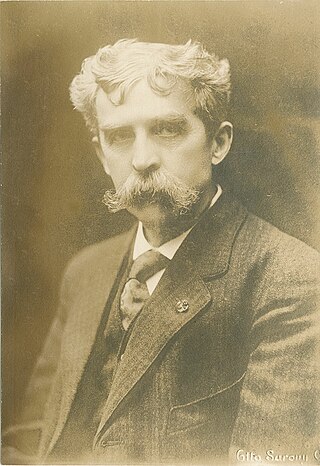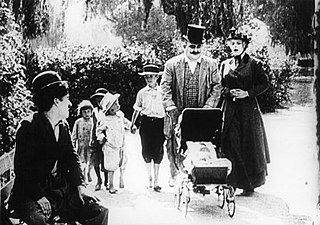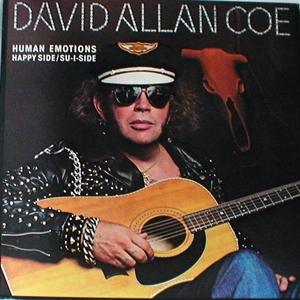Poem
This section is a candidate for copying over to Wikisource. If the section can be edited into encyclopedic content, rather than merely a copy of the source text, please do so and remove this message. Otherwise, you can help by formatting it per the Wikisource guidelines in preparation for the duplication. |
Written in ballad form, the poem tells of an artist ruined by love; having lost his beloved Madeline to another man, he has turned to drink. Entering a bar, the artist tells his story to the bartender and to the assembled crowd. He then offers to sketch Madeline's face on the floor of the bar but falls dead in the middle of his work. Here is the full text:
- 'Twas a balmy summer's evening and a goodly crowd was there,
- Which well-nigh filled Joe's barroom on the corner of the square,
- And as songs and witty stories came through the open door
- A vagabond crept slowly in and posed upon the floor.
- “Where did it come from?” someone said, “The wind has blown it in.”
- “What does it want?” another cried, “Some whiskey, rum or gin?”
- “Here Toby, sic him, if your stomach is equal to the work —
- I wouldn't touch him with a fork, he’s as filthy as a Turk.”
- This badinage the poor wretch took with stoical good grace;
- In fact, he smiled as though he thought he'd struck the proper place.
- “Come boys, I know there's kindly heart among so good a crowd —
- To be in such good company would make a deacon proud.”
- “Give me a drink — that’s what I want — I'm out of funds you know;
- When I had cash to treat the gang, this hand was never slow.
- What? You laugh as though you thought this pocket never held a sou:
- I once was fixed as well my boys, as anyone of you.”
- “There thanks, that’s braced me nicely; God Bless you one and all;
- Next time I pass this good saloon, I'll make another call.
- Give you a song? No, I can't do that, my singing days are past;
- My voice is cracked, my throat's worn out, and my lungs are going fast.
- “Say, give me another whiskey, and I'll tell you what I'll do —
- I'll tell you a funny story and a fact I promise too.
- That I was ever a decent man, not one of you would think;
- But I was, some four or five years back. Say, give me another drink.
- “Fill 'er up, Joe, I want to put some life into my frame —
- Such little drinks, to a bum like me are miserably tame;
- Five fingers! — there, that's the scheme — and corking whiskey too.
- Well, here's luck, boys; and landlord, my best regards to you.
- “You’ve treated me pretty kindly, and I'd like to tell you how
- I came to be the dirty sot, you see before you now.
- As I told you once, was a man with muscle, frame and health,
- And, but for a blunder, ought to have made considerable wealth.
- “I was a painter — not one that daubed on bricks or wood,
- But an artist, and for my age I was rated pretty good,
- I worked hard at my canvas and was bidding fair to rise,
- For gradually I saw the star of fame before my eyes.
- “I made a picture, perhaps you've seen, 'tis called the 'Chase of Fame.'
- It brought me fifteen hundred pounds and added to my name.
- And then I met a woman — now comes the funny part —
- With eyes that petrified my brain, and sunk into my heart.
- “Why don't you laugh? 'Tis funny, that the vagabond you see
- Could ever love a woman and expect her love for me;
- But 'twas so, and for a month or two, her smiles were freely given,
- And when her loving lips touched mine it carried me to heaven.
- “Did you ever see a woman for whom your soul you'd give,
- With a form like the Milo Venus, too beautiful to live;
- With eyes that would beat the Koh-i-noor, and a wealth of chestnut hair?
- If so, 'twas she, for there never was another half so fair.
- “I was working on a portrait, one afternoon in May,
- Of a fair haired boy, a friend of mine, who lived across the way.
- And Madeline admired it, and much to my surprise,
- Said she'd like to know the man that had such dreamy eyes.
- “It didn't take long to know him, and before the month had flown
- My friend had stolen my darling, and I was left alone.
- And, ere a year of misery had passed above my head.
- The jewel I had treasured so had tarnished, and was dead.
- “That's why I took to drink, boys. Why, I never saw you smile,
- I thought you'd be amused, and laughing all the while.
- Why, what's the matter friend? There's a teardrop in your eye.
- Come, laugh like me; 'tis only babes and women that should cry.
- “Say boys, if you give me just another whiskey, I'll be glad,
- And I'll draw right here a picture, of the face that drove me mad.
- Give me that piece of chalk with which you mark the baseball score —
- And you shall see the lovely Madeline upon the barroom floor.
- Another drink, and with chalk in hand, the vagabond began,
- To sketch a face that well might buy the soul of any man.
- Then, as he placed another lock upon that shapely head,
- With a fearful shriek, he leaped and fell across the picture — dead! [3]









